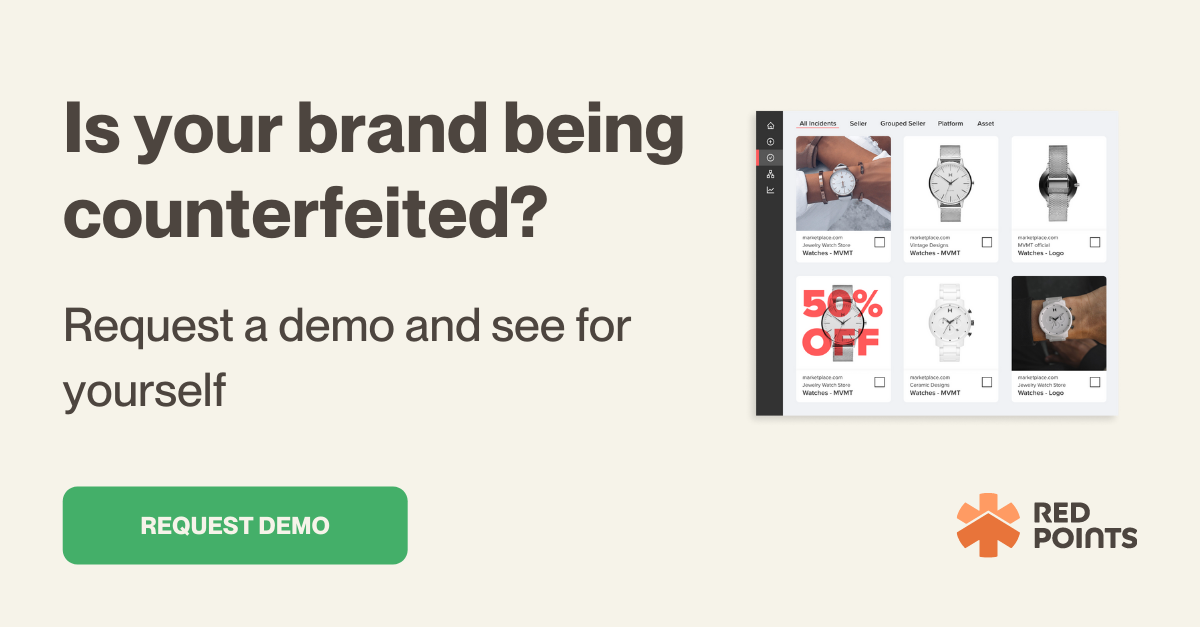As its name suggests, the gray market straddles the fine line between legality and brand authorization. In this article, we explore the intricacies of the gray market, its ramifications for brand integrity, and strategies for safeguarding against its legal yet potentially detrimental effects.
Summary:
- The gray market refers to products that are sold legally, but outside of the brand’s permission.
- These products can harm relationships with distributors and damage product reputation.
- Common gray market goods include cameras, cars, watches, and even pharmaceuticals.
- Numerous methods for limiting the harms of gray goods exist for brands to employ.
This discussion focuses exclusively on gray market goods, setting aside related concepts such as gray market securities and the gray economy, which involve pre-issue trading of company shares and tax-evasive goods and services.

What is the gray market?
Gray market goods are new items that are sold legally but outside authorized distribution channels. This includes everything from cars and shoes to software and pharmaceuticals. The gray market is not a new phenomenon. To understand it, let’s touch on a simplified retail model.
First, a manufacturer or brand will sell a product to a distributor. Then the distributor will sell it to authorized retail outlets, and those outlets sell the product to end consumers. In an ideal world, the right amount of product would be manufactured and sent to retail, and the public would purchase all of it.
However, this is not always the case. When a distributor or retailer is left with excess or old stock, they can choose to sell off the stock at discounted prices to other dealers. These dealers then sell the product to the public at discounted prices. Despite the mental image that the term may bring, unauthorized dealers often look the same to consumers as authorized dealers. The only visible difference would be lower prices. However, they can’t offer manufacturer warranties, and some products may not meet regulatory standards for the country in which they are for sale.
Gray market products can be put into circulation by the brands themselves (by the brand selling old stock), or by third parties down the line of distribution (by retailers or distributors selling off unsold stock).
The gray market also exists across national boundaries. Multinational brands often offer products that are specifically designed and priced for certain markets. But for resellers, it may be financially advantageous to purchase a product in one country and sell it in another. This phenomenon is known as parallel importing. For example, say a brand provides cell phones to countries A and B. Comparable phones in country A are less expensive than in country B. Once phones have been sold to distributors in each country, retailers in country B may be able to purchase phones in country A to then return and sell them to consumers in their own country.
Effects of gray market goods
When gray market goods are readily available to consumers at huge discounts online, it can cause brand issues. Customers may wonder what’s wrong with the product or with the brand for it to be sold so comparatively cheaply. Conversely, it may seem like the regular retail prices are inflated for no reason if customers become used to the lower price.
These products also undermine the quality of a brand’s distribution network by damaging the trust distributors have in brands. Gray market products also make it hard to maintain different prices in different markets, especially if the authorized sellers have agreed to a MAP policy. Furthermore, electronics from unauthorized dealers may come with incompatible charging cables or instructions written in a foreign language. When someone experiences this, they are likely to blame the brand for the inconvenience.
In addition to affecting the brand, gray market sellers also affect authorized retailers. Since it’s easy to find these items on the internet, shoppers may assume that the gray market price is the best price for an item. When a shopper with this knowledge goes into a store to buy, the retailer may be forced to either give a huge discount to meet online prices or walk away from a sale.
Gray market websites
Unauthorized dealers did exist before the Internet, but they were harder to find. They were mostly located in large cities, and you’d have to physically go to their shop to see that they offered discounts on branded items. It would be unlikely for someone to know gray market options existed if they weren’t looking for them.
The internet changed all that. Today, unauthorized dealers prosper on websites like Amazon and eBay. Of course, you can find authorized dealers on these sites, too, but they have to compete with gray market prices. Gray market websites can also cater to specific product niches. With enough searching, you can find gray market websites dedicated to shoes, watches, clothes, cameras, furniture, TVs, and more. Any product that is in high demand has the potential to show up on unauthorized sites.
Regulatory considerations
Gray market items purchased from one country and sold in another may not meet the second country’s regulatory requirements. For example, automobiles are bought and sold across state lines on the gray market. However, a car produced for European regulations may not meet auto regulations in the US. The unauthorized dealer or the final buyer would then be responsible for modifications to meet local standards, and that can add a high cost to the car.
Likewise, different countries may have additional regulations for children’s toys, pharmaceuticals, electronics, and more. These types of products are much less likely to be modifiable to meet local regulations. Unauthorized dealers can’t guarantee that their items meet regulations, and consumers are left to take a gamble.
Common gray market examples
- Nikon cameras meant for Japan but resold in the US—instructions may be in Japanese
- Swiss and other watches on Jomashop.com—these watches are sold to Jomashop by dealers who need to clear out their inventory
- Car models sold in another country—these cars most likely won’t pass emissions or safety standards in the gray market country
- Gray market sellers on eBay and Amazon sell new products at steep discounts
How to combat the gray market
The first step is for brands to take a global approach to the gray market across borders instead of by region. For example, let’s think about lower-priced products originally sold in Eastern Europe being sold by unauthorized dealers in Italy. Initially, the regional operation in Eastern Europe benefits from the sale to an unauthorized dealer or distributor. However, the brand as a whole suffers when the items are resold in Italy. Multinational brands can start by taking a cohesive stance against supplying unauthorized dealers, even if it means losing sales in one region.
The second is for brands to educate their customers on the importance of shopping from authorized dealers. Many consumers follow their favorite brands on social media, but if they aren’t made aware of the gray market, they may fall prey to deep discounts from unauthorized dealers. Gray market education should be incorporated into a brand’s media presence to make consumers more aware of the issue.
What’s next
Customers must know the risks of shopping on the gray market. Gray market websites can’t offer manufacturer warranties, guarantee that regulations are met, or even guarantee product instructions will be in the appropriate language.
Customers also need to know that any kind of warranty they receive will be offered by a third party and not the original brand—third-party warranties may not cover 100% of the product and they may require customers to prepay to file a claim. The growth in peer-to-peer payment processing may make the gray market harder to combat, but consumer education can go a long way.
To safeguard your brand in a market where the lines between gray market selling and counterfeiting can blur, Red Points’ Brand Protection Software offers a targeted solution. While focusing primarily on identifying and taking down counterfeit listings, our approach also indirectly addresses the challenges posed by gray market activities. By maintaining control over unauthorized sales, we help preserve the integrity and value of your brand. Discover more about our tailored brand protection strategy and book a free demo today to see the impact it can have on safeguarding your brand in a complex marketplace.






